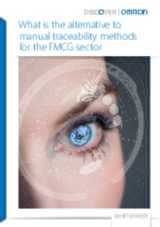Using traceability to analyse and optimise productivity
Published on 04 May, 2023 in Industry 4.0
In the fourth blog in this series on Traceability we will discover how the use of traceability can add value to the production process by optimising productivity.
In addition to helping companies avoid recalls and other disruptions to their profitability, traceability systems are also a great way to optimise processes and evaluate overall equipment effectiveness (OEE). By collecting and analysing operational data, manufacturers can figure out which machines are under-performing and pinpoint precisely where bottlenecks are occurring in production.
In order to gather this data, manufacturers need to set up numerous code reading stations at various points across the production line. Barcoding helps track vital productivity information such as throughput and quality based on package type, machine, shift and product. In many cases, this means that barcode readers need to be embedded within machinery. This poses a challenge, since most manufacturing equipment is designed to take up as little space as possible and therefore doesn’t have much extra room for barcode readers. This creates the need for ultracompact readers.
These ultra-compact industrial barcode readers and smart cameras are designed to be highly flexible and configurable within an exceptionally compact casing. This means that they can be easily embedded within machinery while still providing fast and accurate reading. Thanks to their liquid lens autofocus technology, the readers eliminate constraints on camera positioning. The same camera can be used for machine vision inspection, enabling the expansion of automation as a facility’s needs evolve without investment in new hardware.
Once traceability data is gathered via the barcode readers, it needs to be communicated to the rest of the system. This poses a new challenge – that of using this data without hampering control performance. When traditional controllers are tasked with processing large amounts of traceability data, they are liable to slow down the production cycle time.
Automation manufacturers have addressed this issue by developing controllers that can maintain high-speed control while handling all the information a traceability system provides. For example, controllers can be used for a packaging machine with the capability of handling 1,000 products per minute and can collect all traceability data in synchronisation with the production cycle while performing motion control. This means that traceability doesn’t need to slow down other aspects of production while fulfilling the purpose of collecting important data. Barcode readers provide direct connectivity via Ethernet/IP to the controllers, making it simple to integrate traceability data into the automated system. When it comes to utilizing traceability information, the data collection is one challenge. It’s another matter altogether to transfer that data to the business and enterprise systems that store and use the data. Controllers can make this easy thanks to the seamless incorporation of SQL and OPC-UA.
Contact us for more information
